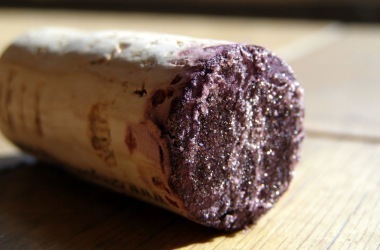

Beware of corked wine!
A corked wine does not mean a wine with bits of cork in it.
Corked wines are not that easy to spot visually. So how can you tell if your wine is corked?
The answer is by tasting and smelling. And it is not in the smell of the cork, but in the smell and taste of the wine itself. A corked wine can have aromas of wet cardboard, damp socks, and dare we say it, the smell of a wet dog!
On the palate, a corked wine tastes dull, as if it lacks fruit. Sometimes, it can even taste bitter.
Corked wines are named as such because of the natural cork used to bottle the wine. The contact of wine with cork during storage is not the cause of corked wine.
Because natural corks are made of organic material, it is prone to be eaten by microorganisms like fungi. As a by-product of eating the cork, fungi produces 2,4,6-trichloroanisole, also known in the wine world as TCA, and this substance then falls into the wine. It is this substance - not the cork itself - that falls into the wine and and reacts with it, thereby contaminating the wine.
This contamination is not due to poor storage conditions. Even the best storage conditions can cause a corked wine. It is hard to tell whether the fungus exists in the air.
So how can you avoid the misfortune of buying a bottle of corked wine. The only way to do that is to buy a bottle with a screw cap or with synthetic, man-made corks.




